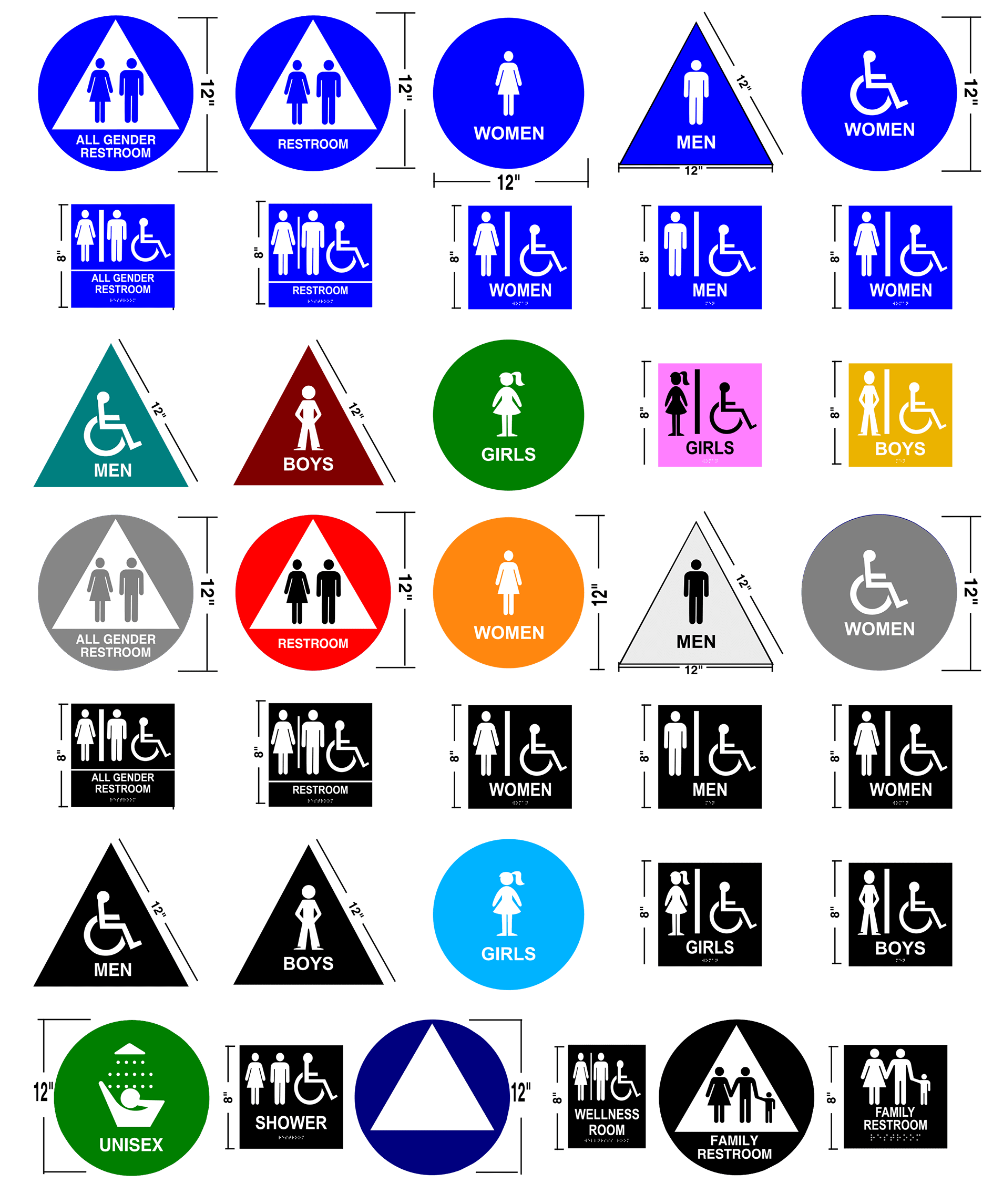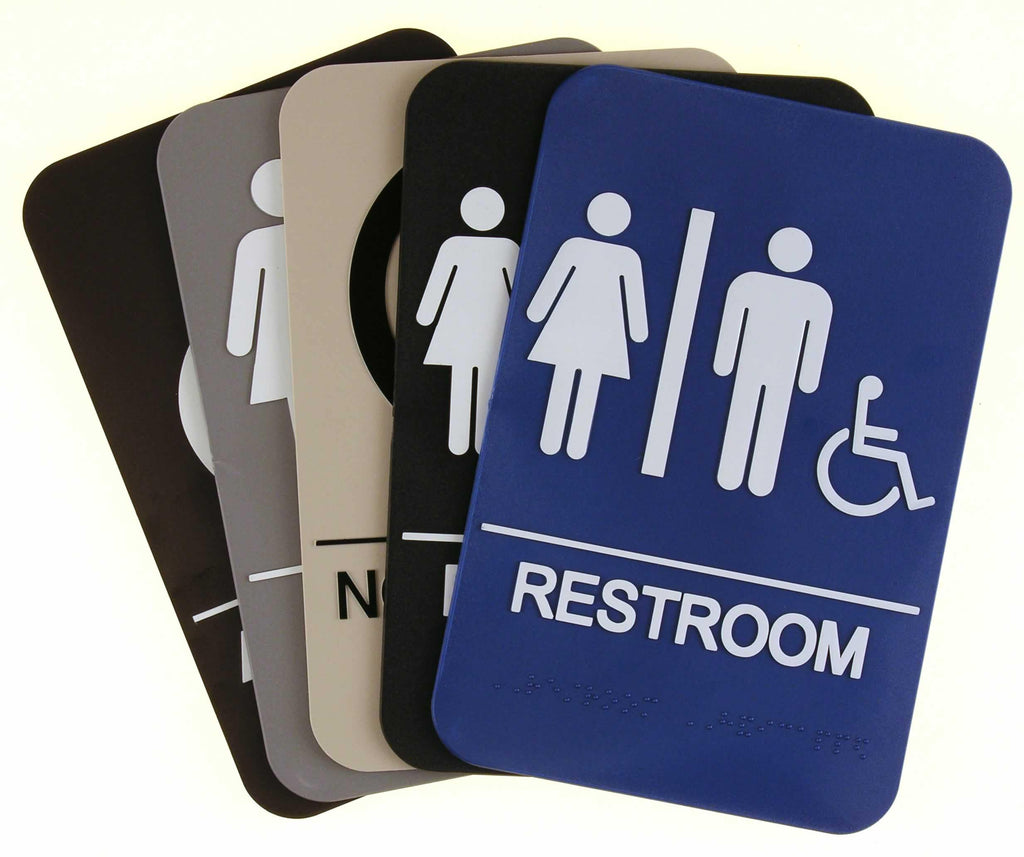The Effect of ADA Signs on Area Availability
The Effect of ADA Signs on Area Availability
Blog Article
ADA Signs: Making Certain Ease Of Access and Conformity in Public Spaces
ADA signage plays an indispensable function in assuring accessibility and compliance within public rooms, substantially contributing to an inclusive setting for people with handicaps. As we discover the subtleties of ADA signs, from tactile attributes to make details, it's important to take into consideration just how these elements integrate to maintain the legal rights of all customers.
Significance of ADA Signs
In modern-day culture, the significance of ADA signs prolongs past mere compliance with legal requireds to symbolize a dedication to inclusivity and access for all people. These indicators are necessary in developing settings where people with disabilities can browse public areas with the same ease and independence as those without disabilities. By supplying standardized and clear details, ADA signage guarantees that everybody can access facilities, solutions, and info without barriers.
The relevance of ADA signs depends on its ability to enhance the lifestyle for individuals with specials needs by promoting equal accessibility. It eliminates the barriers that might otherwise hinder their capacity to get involved fully in area life. Moreover, these signs serve as noticeable signs of a company's devotion to variety and equal rights, showing broader social worths that champion the rights and dignity of all individuals.
In addition, ADA signage plays a vital role in public safety and security. By leading individuals to leaves, washrooms, and other important facilities, it makes sure that all individuals, no matter physical capacity, can evacuate safely throughout emergency situations. In summary, ADA signs is not just a regulatory requirement but a powerful device for fostering a inclusive and equitable society.
Key Aspects of Conformity

Positioning is vital; signs should be mounted in areas that are obtainable and quickly visible. Typically, signage should be placed in between 48 and 60 inches from the ground to guarantee accessibility for both standing and mobility device users. Responsive components, such as Braille, are important for individuals with visual problems, offering essential details in a non-visual format.
High-contrast colors in between the message and background are essential to enhance readability for people with reduced vision. The ADA mandates particular contrast ratios to ensure clarity. Additionally, personality dimension is a key consideration, with minimum elevation needs dictated by the viewing distance to guarantee readability from different angles.
Design Considerations for Accessibility
Designing obtainable signs needs a meticulous technique to guarantee it fulfills the needs of all users, specifically those with disabilities. The dimension of the message is just as vital, with ADA guidelines recommending a minimal height based on seeing range to make sure clarity.
Contrasting shades between message and background are important for visibility, particularly for individuals with aesthetic disabilities. Furthermore, responsive aspects, such as Braille and increased characters, are important for people who are blind or have reduced vision.
Moreover, the positioning of signage plays a considerable duty in access. Indicators ought to be installed in locations that are quickly obtainable and unobstructed. Making certain that signs is installed at ideal elevations and angles makes it possible for all users, consisting of those utilizing wheelchairs, to engage with them successfully.
Typical Mistakes to Avoid

One more common mistake is the wrong positioning of signs. ADA guidelines define specific height and place requirements to guarantee that signs are conveniently visible and reachable by all individuals, consisting of those utilizing wheelchairs. Neglecting these guidelines not just obstructs access yet also risks non-compliance with legal standards.
Additionally, not enough contrast between text and history is a regular oversight. Appropriate comparison is important for readability, especially for people with reduced vision. Developers often select colors that are visually enticing yet do not have the necessary comparison, making the text hard to recognize.
Lastly, some designers fail to include responsive elements, such as Braille, which are critical for people who are blind. Leaving out these functions not only results in non-compliance with ADA policies but additionally limits accessibility for a sector of the population that counts on tactile details.
Future Trends in Signs
Advancements in modern technology more information and boosting understanding of inclusivity are forming the future patterns in signage style. As society becomes extra mindful of diverse needs, the integration of smart technologies right into signage is acquiring grip. Digital signage, as an example, is evolving to include interactive attributes and real-time updates, which can be essential in giving vibrant info in public areas. These indications usually integrate touch screens or gesture-based controls, making it possible for individuals to navigate content tailored to their details needs.
Another arising trend is the application of augmented reality (AR) to boost customer experience. AR-enabled signage can overlay digital information onto the physical setting, providing aesthetically impaired people with auditory or haptic responses. ADA Signs. This modern technology not only boosts ease of access but likewise develops an interesting experience for all customers
Sustainability is likewise a substantial aspect affecting signs trends. Environment-friendly materials and energy-efficient illumination services are being focused on to line up with worldwide ecological objectives. Improvements in materials science are leading to the development of even more sturdy and weather-resistant indications.
Verdict
ADA signs plays a vital role in assuring my latest blog post accessibility and compliance within public spaces by incorporating responsive aspects, high-contrast colors, and calculated positioning. The adherence to ADA standards not only assists in safe navigation for individuals with specials needs however likewise symbolizes a company's dedication to diversity and inclusivity. By staying clear of typical mistakes and welcoming future trends, public areas can continue to advance these worths, ensuring that the civil liberties and dignity of all individuals are appreciated and maintained.
ADA signage plays an important role in assuring ease of access and compliance within public spaces, significantly contributing to a comprehensive setting for people with impairments. As we explore the nuances of ADA signs, from tactile attributes to make details, it's vital to think about exactly how these elements coalesce to copyright the rights of all customers.In contemporary culture, the value of ADA signage prolongs past plain compliance with legal requireds to personify a commitment to have a peek here inclusivity and accessibility for all people. By giving standardized and clear information, ADA signage makes sure that every person can access facilities, services, and details without barriers.
ADA signs plays an essential function in ensuring availability and compliance within public areas by including tactile elements, high-contrast colors, and strategic placement. (ADA Signs)
Report this page